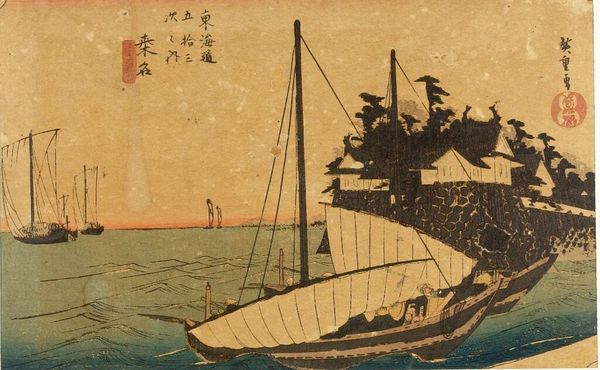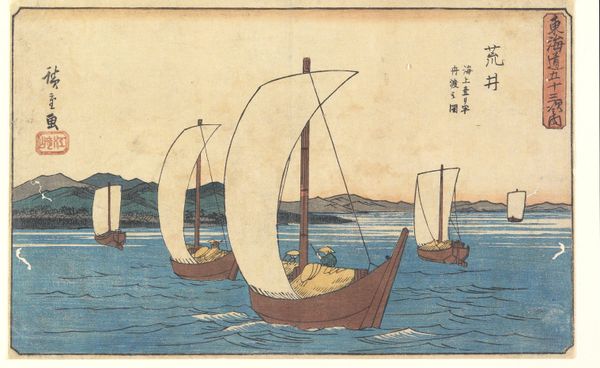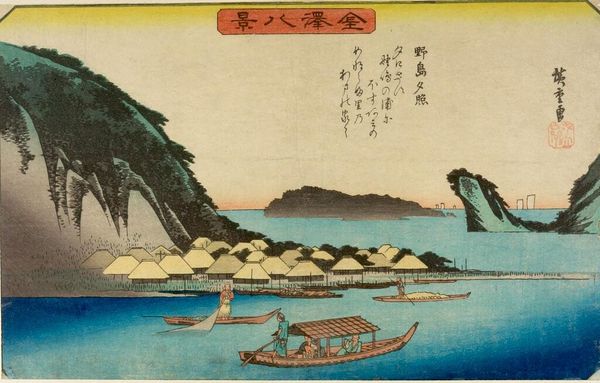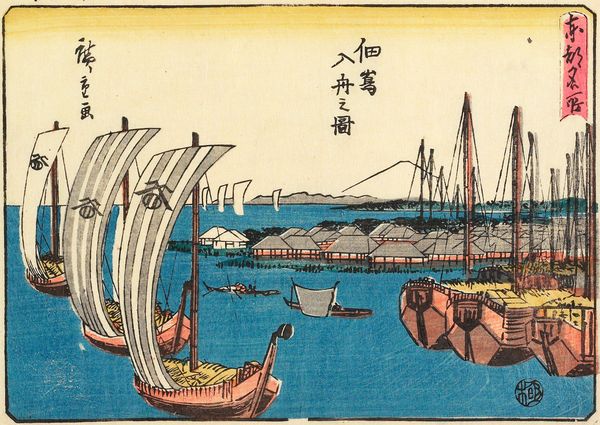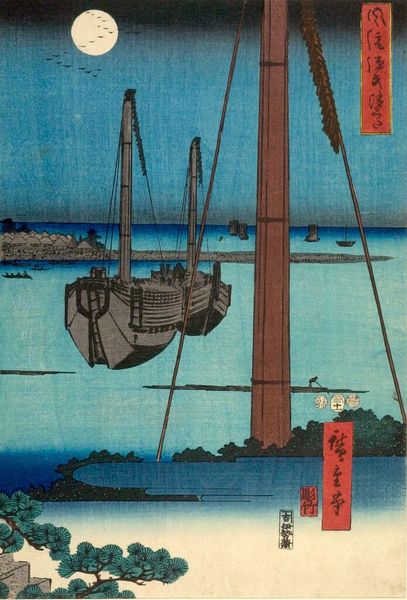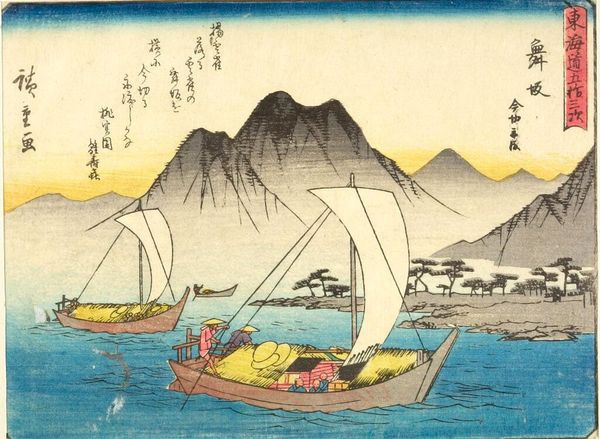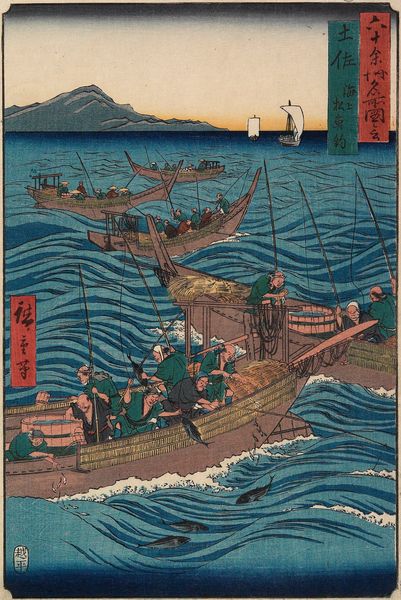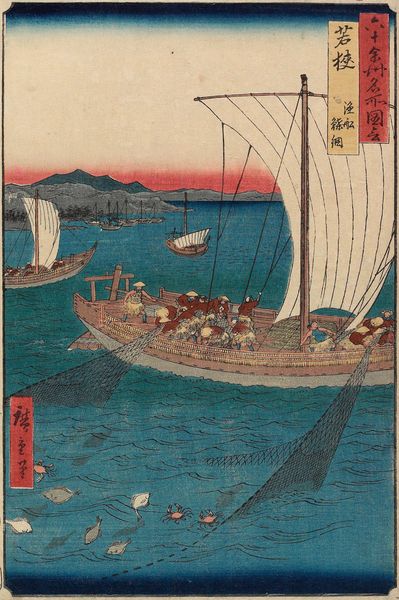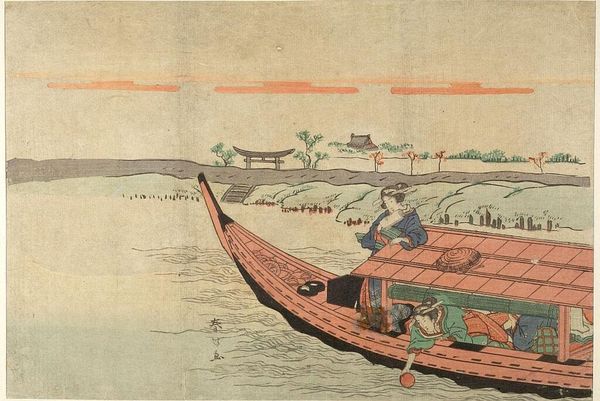
No. 31, Arai: The Checkpoint (Gosekisho), from the series The TÅkaidÅ Road, The Fifty-three Stations (TÅkaidÅ, GojÅ«san tsugi no uchi) c. 1850 - 1851
0:00
0:00
Copyright: CC0 1.0
Curator: Utagawa Hiroshige's woodblock print, "No. 31, Arai: The Checkpoint," shows boats on a still body of water. I'm immediately struck by how serene it is, the soft colors and gentle lines create a sense of peace. Editor: It's fascinating to see how the socio-political landscape shapes even seemingly tranquil scenes. The checkpoints were crucial for controlling movement and trade along the Tōkaidō road during the Edo period. Curator: Right, that control is visible in the materiality of the boats, the sails, the ropes, and the labor of the people on board. How did these materials and their arrangements facilitate that control? Editor: Indeed. The very act of documenting these stations through prints like this also played a role in solidifying the government's authority, shaping a visual narrative of the nation. Curator: It's a powerful reminder that even seemingly simple artistic choices about what materials to use, and how, can carry significant cultural and political weight. Editor: Absolutely. This print offers a glimpse into the complex interplay between art, society, and power.
Comments
No comments
Be the first to comment and join the conversation on the ultimate creative platform.


